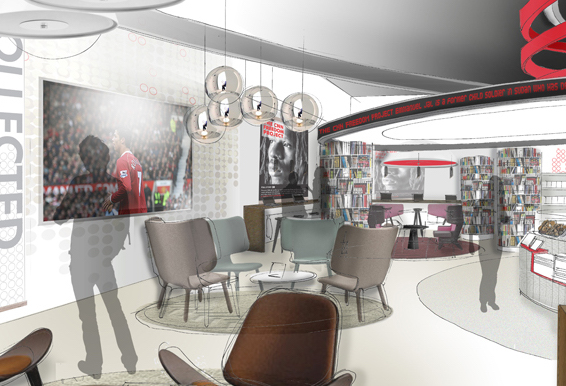Global architecture and design firm Perkins+Will announced today that it has acquired the London-based branding, retail strategy, and design consultancy Portland Design Associates.
Portland, whose clients include British Land, Heathrow Airport, St. Pancras International, Diageo, HMS Host, CNN, and TDIC, is best known for crafting brand and retail strategies that “future proof” their clients’ business by anticipating changes in how customers shop in, and interact with, places.
Portland will become the latest creative services business to join the Perkins+Will group of companies. While Portland will maintain its own brand and operate as an independent entity, the two enterprises will work closely together to deliver “future-proofing” insights to clients. This includes a mix of physical and digital brand experiences for projects ranging from retail, entertainment, and mixed-use to transportation and urban regeneration.
“Our clients will benefit from Portland’s consumer insights, creativity, and strategic thinking, and Portland’s clients will benefit from Perkins+Will’s global reach and broad architectural, design, and planning expertise,” says Perkins+Will President and CEO Phil Harrison.
While Perkins+Will has already engaged Portland as a strategy consultant on various projects in the past, the permanent union of the two companies will strengthen and expand both of their service offerings. It will also allow Portland to work closely with Perkins+Will’s Branded Environments practice to service a greater number of clients globally.
Founded in 1987, Portland and its 40 employees have been under Ibrahim’s leadership since 2007. Ibrahim will continue to serve as Managing Director.
Related Stories
Architects | May 20, 2016
NCARB survey indicates continued growth of U.S. architects
The number of U.S. architects surpassed 110,000 in 2015, a 2% increase from the previous year.
Multifamily Housing | May 19, 2016
Architect Jean Nouvel designs flood-resilient Monad Terrace in Miami Beach
A man-made lagoon with lush vegetation at the base of the complex is expected to adapt to climate change and rising sea levels.
Building Team Awards | May 19, 2016
Chinatown library unites and serves two emerging Chicago neighborhoods
The 16,000-sf, pebble-shaped Chinatown Branch Library was built at the intersection of new and old Chinatown neighborhoods. The goal is for the building to unite the communities and serve as a catalyst for the developing area.
Building Team Awards | May 19, 2016
NYC subway station lights the way for 300,000 riders a day
Fulton Center, which handles 85% of the riders coming to Lower Manhattan, is like no other station in the city’s vast underground transit web—and that’s a good thing.
Market Data | May 17, 2016
Modest growth for AIA’s Architecture Billings Index in April
The American Institute of Architects reported the April ABI score was 50.6, down from the mark of 51.9 in the previous month. This score still reflects an increase in design services.
Architects | May 16, 2016
AIA and HOK partner to advance Design and Health Research Consortium
The groups' key priority is to identify and develop practice-focused opportunities for funded research, publications, and tools in the area of design and public health.
Senior Living Design | May 16, 2016
Perkins Eastman releases white paper on biophilic design in senior living
The paper highlights some of the firm's top projects that feature biophilic design, a sustainable architecture strategy that connects people with nature.
Architects | May 16, 2016
3 strategies to creating environments that promote workplace engagement
VOA's Pablo Quintana writes that the industry is looking for ways to increase engagement through a mix of spaces suited to employees' desire for both privacy and connection.
Architects | May 11, 2016
AIA to create a resilience curriculum for architects
The program will teach resilient design and decision-making on hazard mitigation, climate adaptation and community resilience.
Retail Centers | May 10, 2016
5 factors guiding restaurant design
Restaurants are more than just places to eat. They are comprising town centers and playing into the future of brick-and-mortar retail.

















